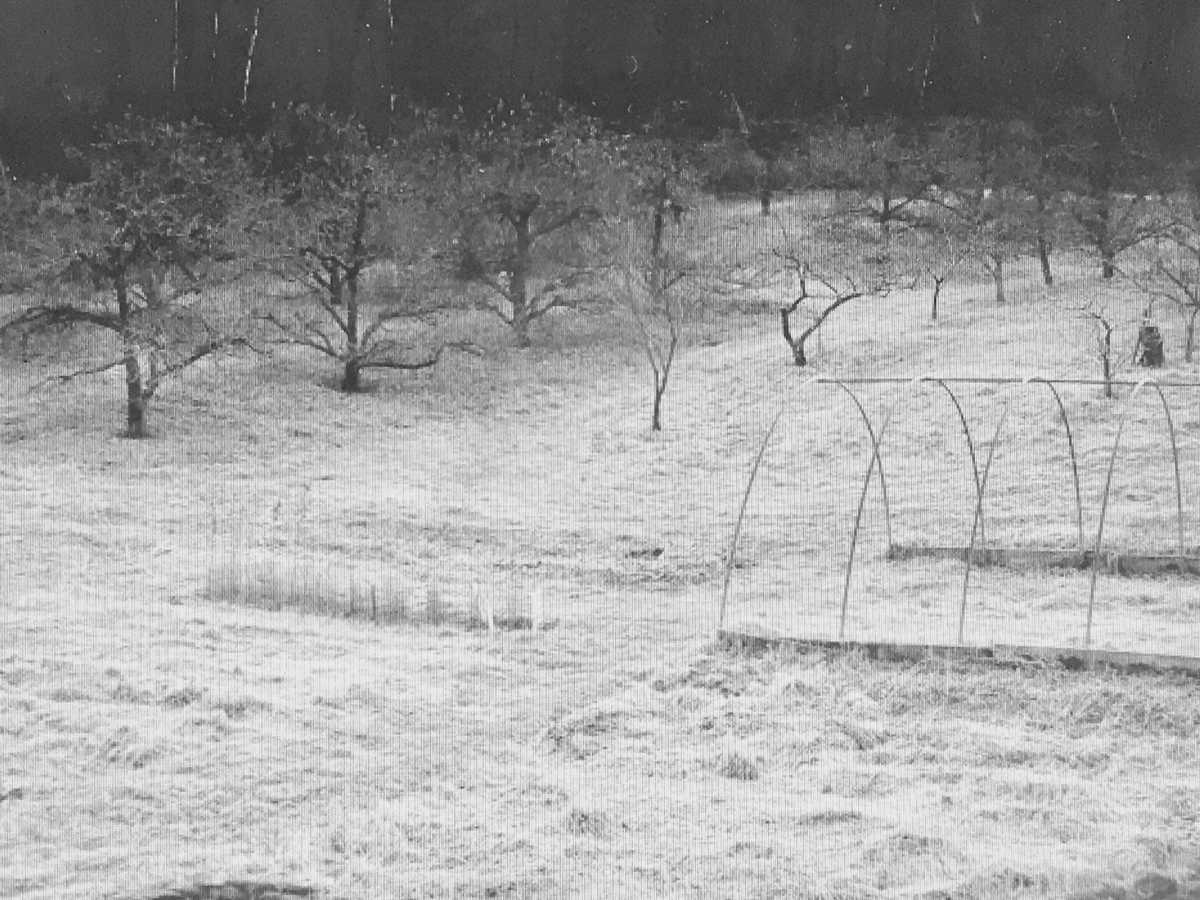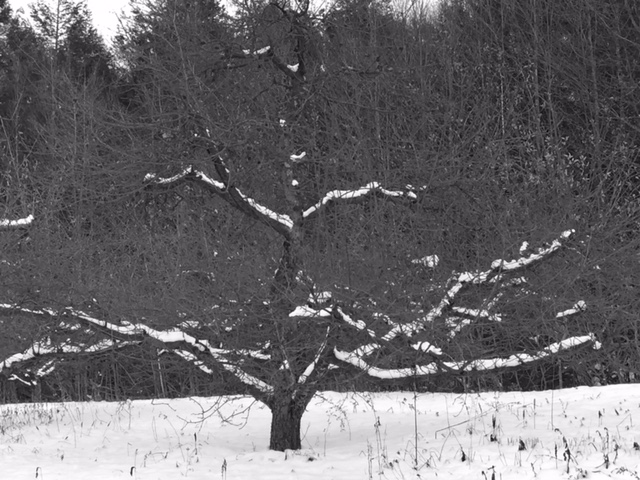
By Alan Surprenant, Orchardist, Brook Farm Orchard, Ashfield, MA
When we think of an orchard, we think about eating fruit in the crisp fall sunshine. We think of the wonderful fragrance of the trees in bloom, the gentle colors of the blossoms, the soft breeze that blows petals around our feet. But what of the orchard in winter, when trees sleep, limbs akimbo against their bed of snow?
We can learn a lot from spending time with the orchard now, at this quiet time of year, observing what, on the surface, might seem unobservable. There’s a lot to learn about ourselves as well, there being many parallels between our lives and the lives of the trees.
Winter dormancy finds the orchard patiently waiting for a new year and the beginning of another growing cycle. This can be a time of patience and unfolding for us as well, as we anticipate and plan for what’s next in our lives, and how we might help it grow. There’s little to do and much to be—loving, appreciative, optimistic, excited—as we wait for spring. How might we do this quietly, the way the trees do? Perhaps we just sit and watch them be still as the light changes and the wind blows.

Snow on the horizontal limbs of a well-pruned fruit tree allows us to clearly see its bones, the structure that supports the bearing of a good crop. The fruit buds have already formed last summer. They will absorb the sunlight and ripen the fruit to its utmost potential.
What does it mean for our lives to have good bones and the structure that supports us in bearing fruit? Good friends? Work we love? Self care? Balance in what we do? What feeds us in our lives, and how might we absorb it for our ripening?
A fruit tree should be pruned each year. Removing what isn’t needed helps the fruit grow. Sometimes, looking down at a growing pile of discarded wood, it seems like I’m taking an awful lot away. But I’m paring down to what is essential for and about the tree, so it can become more of itself. It’s an art, this figuring out what to keep, and well worth it, because what grows now will be healthy, productive and strong.
Pruning our own lives can be equally as challenging, as we figure out, learning as we go—which I’ve done with the trees—what is essential about and for us. What might we discard that no longer serves us? An assumption? A belief? A story that limits us or people we know? How might we prune our relationships so they grow stronger and yield the best that we and others have to offer?
Some of the branches I cut in winter—they’re called scions—are saved for grafting onto rootstock in the spring. You make new trees this way, by gently inserting new wood into old, binding the two together until, fed by the soil and the sun, they become one. What parts of others might we take into ourselves to grow something new? And how might our branches find new life as we grow and change over the years? Each winter, I work hard to prune the orchard well, and I have time to think of these things as I do.
I believe all this watching and waiting and thinking makes me better with the trees. I’m more able to understand the way they grow, what they need, how they respond to weather and light. I try something and then I pause—for a minute, a month, or a year—and see what happens, what the trees and my experience tell me. And it makes me better with my life as well. I’m more able to let time and people take their natural course. I can see more clearly what someone needs in order to feel safe or productive or loved.
Teaching people about trees and orcharding gives me the opportunity to share not just the technical things—which limbs to take, what varieties to choose, how to hold the knife just so to make a good graft—but also my experience with the orchard as a place of profound learning and quiet and, ultimately, delight. It’s a place to find balance in our often dizzying lives. I think there’s a part of each of us that longs for “tree time”, where we sit and watch and wait for the little (and not so little) things we do to blossom and make fruit. That time is here, in the orchard in winter.

Comments
barbara@soulmed... said:
Beautiful Alan. The photograph of the apple? tree looks like an elder Tai Chi Master! Thank you.
Add new comment